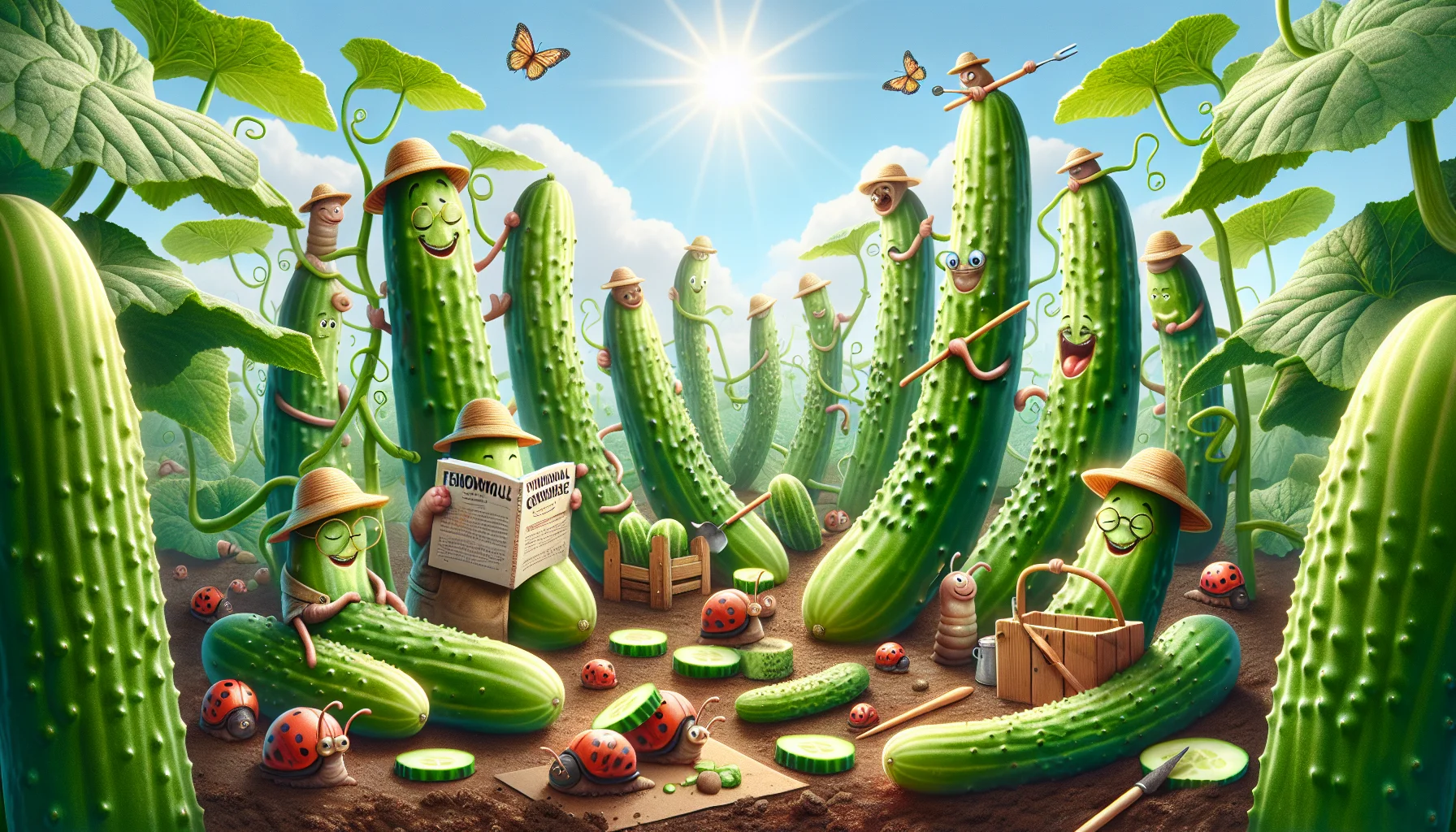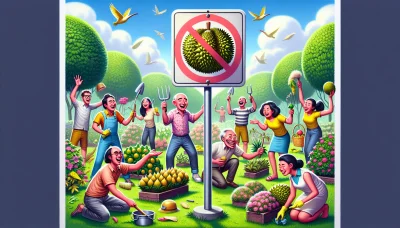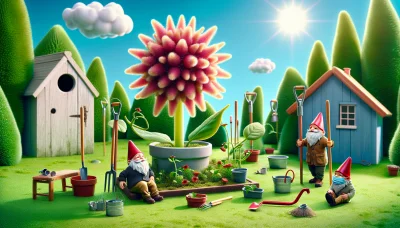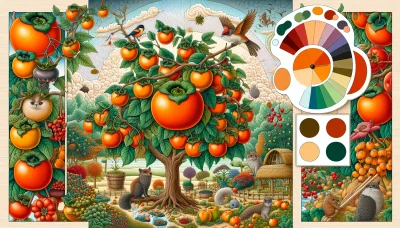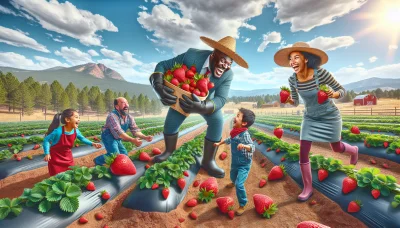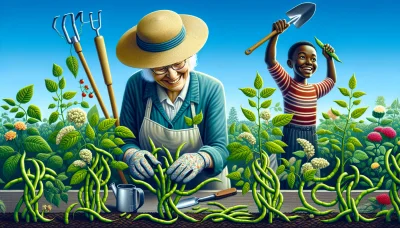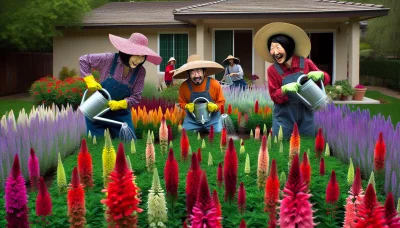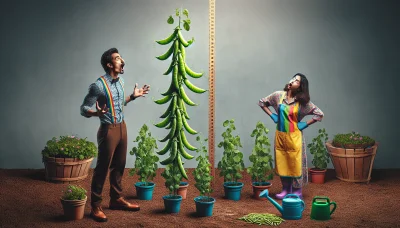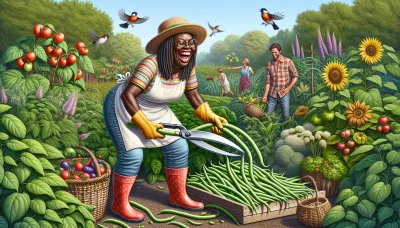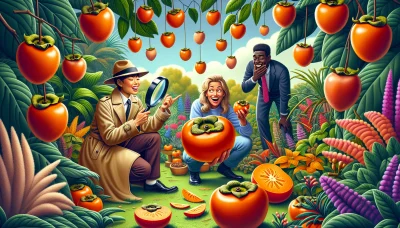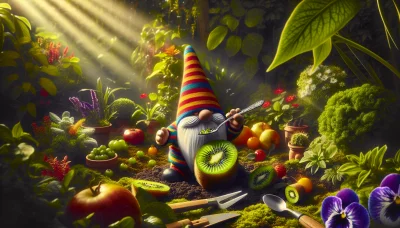Cucumber season Quiz
Test Your Knowledge
Question of
Understanding Cucumber Season
For gardeners, knowing the cucumber growing season is crucial for a successful harvest. Cucumbers thrive in warm temperatures and require a frost-free growing period of at least 50 to 70 days. Understanding the local climate and the best time to plant cucumbers can ensure that they receive the right conditions to grow, flower, and produce fruits. This knowledge helps in planning the planting schedule, leading to a bountiful and timely harvest.
When to Plant Cucumbers
The best time to plant cucumbers largely depends on your local climate zone. In general, cucumbers thrive in warm conditions and should be planted after the last frost date in your area. For most temperate regions, this typically means planting can begin in late spring or early summer. In warmer climates, such as USDA zones 9-11, planting can occur almost year-round, though it's best to avoid the hottest months. If you're in a cooler zone (zones 3-7), aim to plant your cucumbers as soon as the soil can be worked and the danger of frost has passed, usually from late May to early June. For those with a short growing season, starting seeds indoors a few weeks before the last frost date can give your cucumbers a head start. Always check your local frost dates and adjust planting times accordingly to ensure the best growth and yield from your cucumber plants.
Choosing the Right Cucumber Varieties for Your Garden
When it comes to planting cucumbers, the variety you choose can greatly influence your gardening success. Cucumbers can be broadly categorized into slicing, pickling, and specialty types, each suited for different culinary uses and growing conditions. For warmer climates, varieties like the 'Marketmore 76' or 'Suyo Long' are excellent choices, as they are more heat-tolerant and resistant to common cucumber diseases. Cooler climates might benefit from early maturing varieties such as 'Salad Bush' or 'Bush Champion', which can produce a good yield before the first frost. Seasonality also plays a crucial role; for an early harvest, consider 'Early Pride', which matures quickly, whereas 'Armenian' or 'Lemon' cucumbers might be more suitable for those looking for unique flavors and textures in their summer salads. Ultimately, understanding your local climate and the specific needs of each cucumber variety will help ensure a fruitful and enjoyable gardening experience.
Preparing Your Garden for Cucumber Season
- Test and Amend the Soil: Begin by testing your garden soil to understand its pH and nutrient levels. Cucumbers thrive in slightly alkaline soils with a pH between 6.0 and 7.0. Amend your soil based on the test results, adding organic matter like compost to improve fertility and texture.
- Choose the Right Location: Cucumbers need a lot of sunlight to grow, so select a spot in your garden that receives at least 6 to 8 hours of direct sunlight daily. Avoid areas that are prone to strong winds or that get too much shade.
- Ensure Proper Drainage: Cucumbers do not like to have "wet feet," meaning they don't grow well in waterlogged soil. If your garden area has poor drainage, consider raising your beds or incorporating sand or organic matter to improve soil structure.
- Plan for Space: Depending on the variety, cucumbers can be sprawlers or climbers. Provide ample space for sprawling varieties or install trellises for climbing types to save space and promote healthy growth.
- Prevent Pests and Diseases: Rotate your crops each year to prevent disease buildup in the soil. Consider using row covers to protect young plants from pests and remove them when flowers appear to allow for pollination.
- Warm Up the Soil: Cucumbers love warmth. If you're in a cooler climate, warm up the soil before planting by covering your garden bed with black plastic a few weeks before planting. This will increase soil temperature and lead to better germination and growth.
- Water Wisely: While cucumbers need a lot of water, it's best to water deeply and less frequently to encourage deep root growth. Avoid overhead watering to reduce the risk of leaf diseases.
Caring for Your Cucumbers During the Growing Season
Ensuring your cucumbers thrive involves a few critical practices: regular watering, timely fertilizing, and diligent pest control. Cucumbers are particularly thirsty plants, requiring consistent moisture, especially during flowering and fruit development. Aim to provide about 1 inch of water per week, but increase this during hot, dry periods to prevent stress. For fertilizing, a balanced 10-10-10 fertilizer applied every four to six weeks during the growing season will support healthy growth. However, be cautious not to over-fertilize, as this can encourage leaf growth at the expense of fruit production. Pest control is equally important; regularly inspect your plants for common pests such as cucumber beetles and aphids. Early detection and treatment with appropriate organic or chemical controls can prevent significant damage. By adhering to these practices, you can enjoy a bountiful and healthy cucumber harvest.
Harvesting and Storing Cucumbers
Cucumbers are ready to harvest when they reach a suitable size, which is typically when they are about the size of a standard pickle jar, although the exact size can vary depending on the variety. They should be firm and green, without any yellowing, which indicates over-ripeness. To harvest, gently twist the cucumber off the vine or use a pair of scissors to cut it, being careful not to damage the plant. For storing, cucumbers should be kept in the refrigerator where they can last for up to a week. It's best to wrap them in a moist towel and place them in a plastic bag to retain moisture. Avoid washing cucumbers before storing as the moisture can accelerate spoilage. If you plan on pickling, cucumbers can be stored at room temperature in a cool, dry place for a very short period before processing.
Common Challenges in Growing Cucumbers
- Pests: Cucumbers can be affected by pests such as cucumber beetles and aphids. A solution is to use floating row covers to protect the plants and apply neem oil or insecticidal soap to manage infestations.
- Diseases: Diseases like powdery mildew and bacterial wilt can affect cucumbers. To combat these, ensure good air circulation around the plants and practice crop rotation. Using fungicides can also help in severe cases.
- Environmental Stressors: Cucumbers are sensitive to extreme temperatures and irregular watering. To mitigate this, mulch around the plants to maintain soil moisture and use shade cloths during very hot days.
- Soil Nutrition Imbalance: Poor fruit development can be a sign of nutrient deficiency. Test the soil and amend it with compost or a balanced fertilizer to ensure plants receive necessary nutrients.
- Poor Pollination: If cucumbers are not being properly pollinated, fruit yield will be low. Encourage pollinators by planting flowers nearby or hand pollinate by transferring pollen from male to female flowers with a small brush.
